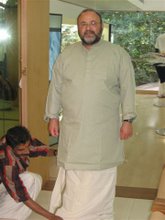
OK, back to tips, FWIW, about people pictures. Please do not misunderstand, I cannot and do not produce images like those made by Henri Cartier-Bresson or some of the other great people / street photographers whom I admire tremendously, such as Walker Evans, Helen Levitt, Garry Winogrand, Ruth Orkin, and Margaret Bourke-White. Another disclaimer is that I am no expert when it comes to technical matters about cameras per se. I got a Brownie when I was about 11 and was instantly hooked. It is easy to forget that the photographer takes the picture, not the camera. If I came off like a Leica snob in my last post, I am sorry. But let's be realistic, you are probably NOT going to go out an get a fine old used film camera, a bunch of used lenses of different focal lengths, and have everything professionally cleaned, lubricated, and adjusted, even though it would be REALLY REALLY SMART of you to do so! It's hard carrying all that heavy equipment around. But, please, don't follow the crowd, and definitely listen "with a grain of salt" to the salesperson in the camera store (especially if its a national chain store and not an independent dealer) because they have inventory they gotta move to make room for the new stuff that is coming in all the time! And, as for most (young) people with their tiny digital cameras, please try to remember that most of their pictures are (a) poorly composed and exposed, (b) vanity shots of their friends being BFFs, pretending to be hot models, or sticking their tongues out, (c) produced by cameras they they think of as fashion accessories rather than as image-making tools, and (d) less important than the convenience and instant gratification that the digital medium provides. YOU, on the other hand, are much smarter than they are! You have a worldview and wish to document it photographically. My last post stressed the merits of the Leica or other rangefinder type of camera for street photography because they are quiet and have a shutter that operates more in "real time," with virtually no lag or waiting between the instant that you see the image that you want to capture, and the instant of exposure. Whether the exposure you are making is on ye olde film or on a digital sensor both does and does not matter, but let's be realistic. You're going to get a digital SLR: there are a gazillion of them out there and they are improving all the time (and hence.
nota bene, also becoming relatively obsolete more quickly). But even with all their merits, DSLRs are still relatively noisy and, for the purposes of streeet / people photography, inconveniently conspicuous beasts, particularly when fitted with long lenses. OK, enough about that. Have a look at this picture of the two guys that I took in the "Old City" of Jerusalem about 40 years ago. My camera was a Kodak Retina rangefinder, probably set to f5.6 or f8, loaded with ASA 400 Tri-X, and focused at the "hyperfocal distance." I had to be very surreptitious for this one. Their expressions were great. It was A DECISIVE MOMENT! I got a good shot, but as soon as they realized that I had just taken their picture, they got really angry about it! Nothing bad ensued, they didn't come running after me. My point is simply that you have to act fast, and you need equipment that facilitates it. A propos, after tens of thousands of shutter clicks, I am certain that my BEST photos ever were taken: on low ASA speed black and white or color film, low ASA speed slide film, Kodachrome or Ektachrome, without automatic metering,and on clunky slow equipment like the rangefinders or various Rolleiflex or other TLRs. 'Nuff said, for now, more later.





